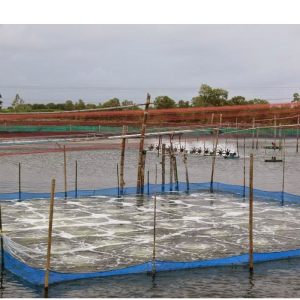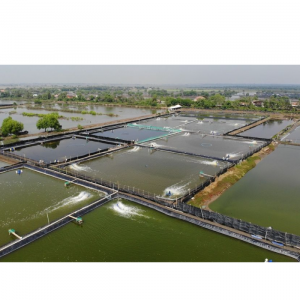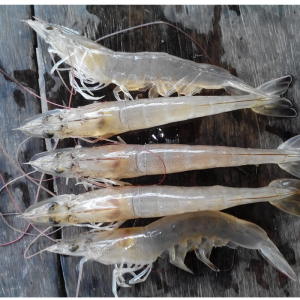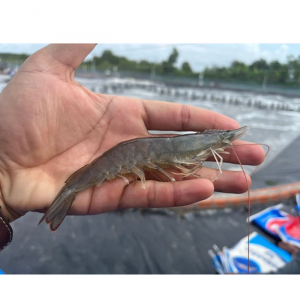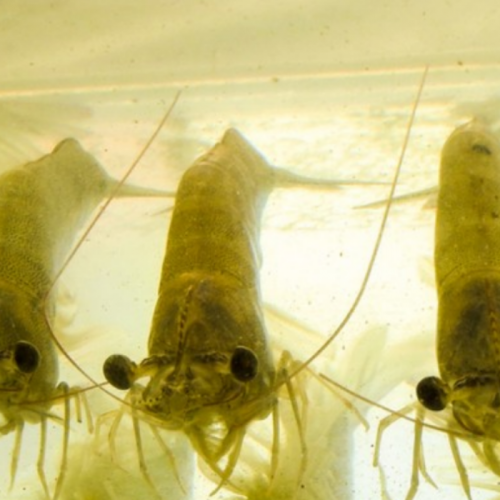
Biofloc Systems, Tilapia by Product may Support Cheaper Shrimp Production
| Tue, 27 Aug 2019 - 08:09
Tilapia processing waste may provide an alternative and less expensive protein source to use in place of fishmeal in shrimp feeds while supporting shrimp production, Brazilian researchers say.
A team of researchers from the Semi-Arid Rural Federal University (UFERSA) and Santa Catarina State University in Brazil explored the use of tilapia processing waste silage (TPWS) in the diets of farmed shrimp raised in clear water (CWS) or biofloc systems (BS).
The researchers published their findings in the journal, Aquaculture and Fisheries.
“The aim of this study was to evaluate the inclusion of tilapia processing waste silage (TPWS) in diets for L. vannamei juveniles reared under clear-water and biofloc conditions,” they said.
Also read: Evaluating Compensatory Growth in Pacific White Shrimp in a Biofloc System
The researchers found that survival was above 80% for shrimp on all diets and in both production systems. However, the inclusion of TPWS in the diets did not alter shrimp performance.
Shrimp final weight and SGR were altered by the production system used, but not by the diet, they said. Shrimp in the biofloc system outperformed those in the CWS.
“In our experimental conditions, the inclusion of tilapia processing waste silage (TPWS) in L. vannamei diets was possible up to 6% without compromise shrimp performance and survival,” the researchers said. “In addition, shrimp raised in BS demonstrated better growth performance as compared to CWS.”
Interest in biofloc production
There has been great interest in exploring the production of Pacific white shrimp (L. vannamei) in biofloc systems, the researchers said. Disease outbreaks and low productivity prompted inquires into alternative production systems to boost shrimp growth and production efficiency.
Biofloc production or biofloc technology (BFT) allows for the production of large amounts of shrimp on a per area or per volumes basis and has little to no water exchange, they said. The system allows for improved biosecurity, practically for farms in regions with a concentration of aquaculture production sharing a water supply.
“BFT has gained popularity because it offers a practical solution to maintaining water quality and recycle feed nutrients simultaneously,” they said. “Another advantage of the biofloc system is the possibility to use alternatives low protein diets and consequently, decrease the production costs; mainly due to the continuous availability of natural food source in a form of live microorganisms.”
Also read: Intestinal Bacteriome of Pacific White Shrimp in Biofloc, Clear Water Systems
Why feed tilapia processing waste silage?
Use of fishmeal is unsustainable and the feed ingredient is one of the most expensive to include in aquaculture diets, the researchers said. The aquaculture industry is interested in limiting or replacing the ingredient.
However, there have been problems found with some of the alternative ingredients adopted including a lack of some essential amino acids, difficulties with palatability and digestibility and the inclusion of anti-nutritional factors, they said. But, there have been some successful alternatives found for use in shrimp diets, including plant-based protein sources and use of mineral supplementation.
“Fish silage can be produced using fisheries and aquaculture processing residues,” they said. “Fish silage is an alternative protein source to the fishmeal and posses a simpler and cheaper production method.”
Additionally, using fish silage as an alternative protein ingredient in aquafeed helps address “environmental and sanitary problems,” stemming from inadequate waste disposal of fish reside, they said. Adding, “It is also a way of decreasing the feeding costs, and, consequently, the production costs since feeding corresponds around of 60% of the overall expenses.”
“Tilapia is a worldwide relevant species for aquaculture industry and has demonstrated positive results as a fish silage incorporated into diets due to its nutritional quality,” the researchers said. However, there is no information about the use of TPWS with shrimp in a biofloc system, they added.
During the feeding trials, juvenile L. vannamei were raised at a 63 shrimp/m2 density in either a biofloc or clear-water conditions for 45 days and received one of five diets, the researchers said.
The diets for both systems were isocaloric and isoproteic included a varying level of tilapia silage (TPWS) at 0, 1.5%, 3%, 4.5% and 6% inclusion, they said. The biofloc used was formed prior to the feeding trial.
The TPWS was generated using Nile tilapia filet residue including “head, bones, skin, fins and viscera,” the said. Acid silage was generated, dried, ground and the pH neutralized before using in trial diets.
“In regards to proximate analysis, the results demonstrated that TPWS contained 83.8% dry matter, 33.7% crude protein, 37.4% crude lipid, and 21.5% ash based on dry matter,” they added.
Water quality measures were monitored twice daily, and all shrimp were weighed at the start and end of the experiment, the researchers said. Final body weight, specific growth rate (SGR), survival and feed conversion ratio (FCR) were determined.
Also read: Ten Easy Steps Towards Biofloc Production of Shrimp or Tilapia
Overall, no interactions were found between the system and the diet, the researchers said. Survival remained above 85% for all diets and systems.
FCR was lower for shrimp in the biofloc system, they said. Average final weight and SGR were altered by the system, but not the diet used, and were higher for shrimp in the biofloc program.
However, shrimp receiving the highest amount of TPWS did tend to have the highest final weight and the largest SGR, they said.
“Both biofloc (BS) and clear-water (CWS) systems, tilapia processing waste silage (TPWS) could be included at the highest level (6.0%) without losses in growth performance and survival,” the researchers said. “On the other hand, in BS condition shrimp presented the best performance as compared to CWS, probably due to the continuous availability of natural food.
“This natural productivity is normally present in a form of bacteria, microalgae, protozoa, nematodes, copepods and rotifers,” they added. “These microorganisms are a rich source of lipids, vitamins and essential amino acids, as well as highly diverse ‘native protein.’”
Source : Feed Navigator













